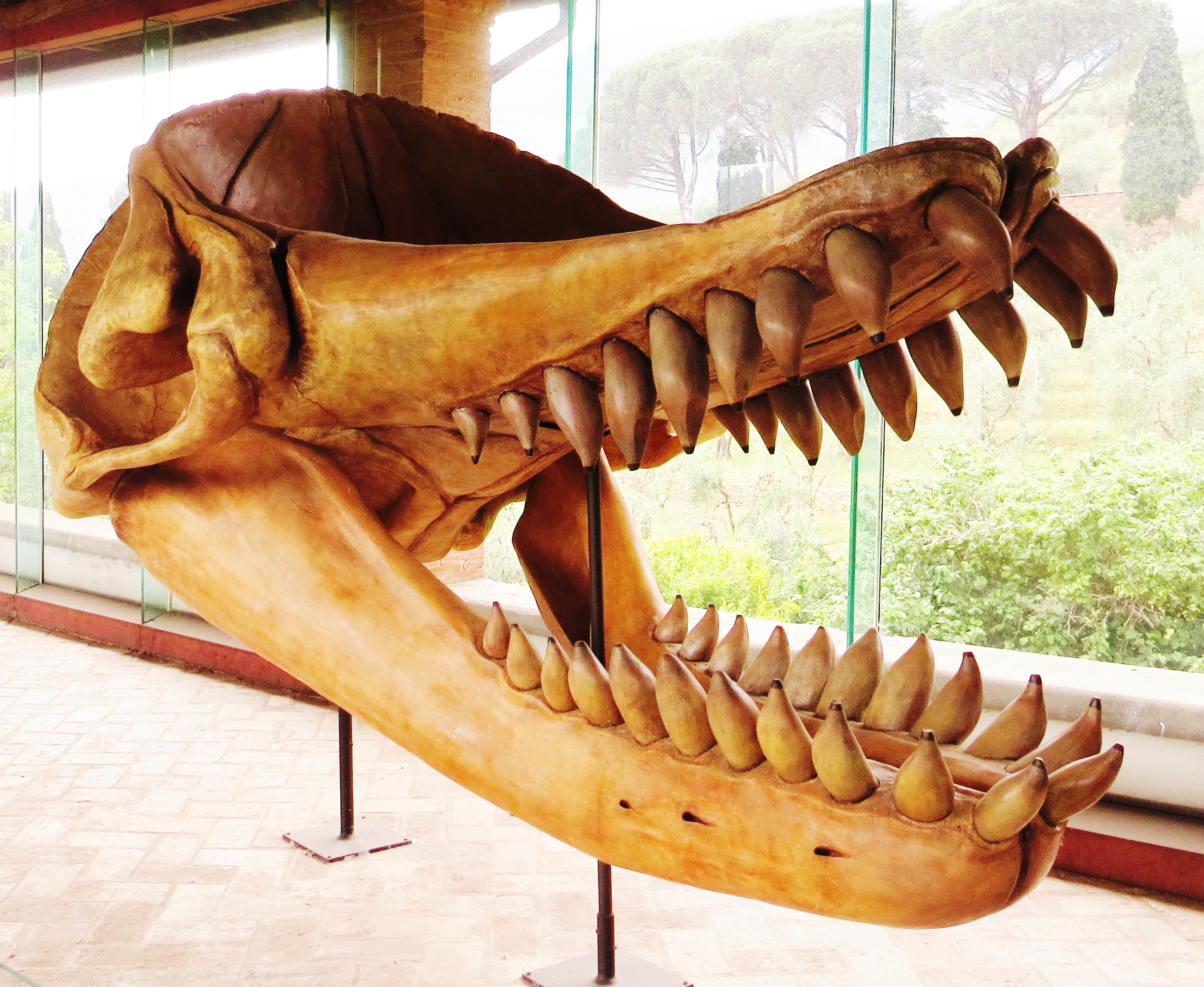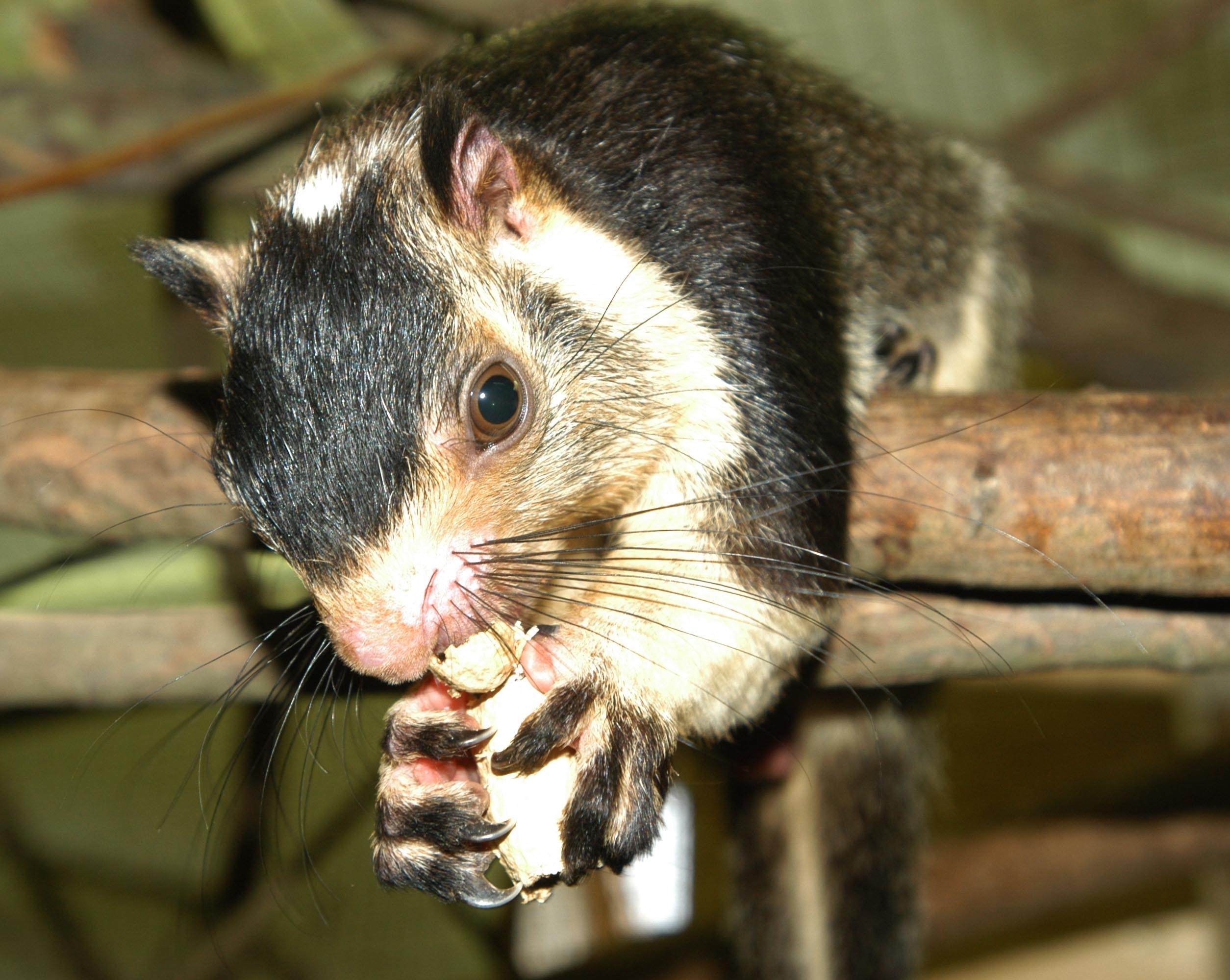|
Hoplocetus
''Hoplocetus'' is an extinct genus of raptorial cetacean of the sperm whale superfamily (biology), superfamily, Physeteroidea. Its remains have been found in the Miocene of Belgium, France, Germany and Malta, the Pliocene of Belgium and France, and the Pleistocene of the United Kingdom and South Carolina. Dentition The teeth of ''Hoplocetus'' are massive (95–150 mm in length; 27–47 in maximum diameter), robust and have a short Tooth enamel, enamel cap on the crowns. They are somewhat larger than those of modern orcas but considerably smaller than those of macroraptorial sperm whales, such as ''Zygophyseter'', as well as those of ''Scaldicetus caretti''. They display a large degree of abrasion, suggesting a highly predatory ecological niche, niche comparable to that of modern orcas. The genus of the latter, ''Orcinus'', first appears in the middle Pliocene and it may have eventually replaced ''Hoplocetus''. These teeth features also characterize the other extinct toothed ... [...More Info...] [...Related Items...] OR: [Wikipedia] [Google] [Baidu] |
Scaldicetus
''Scaldicetus'' is an extinct genus of highly predatory macroraptorial sperm whale. Although widely used for a number of extinct physeterids with primitive dental morphology consisting of enameled teeth, ''Scaldicetus'' as generally recognized appears to be a wastebasket taxon filled with more-or-less unrelated primitive sperm whales. Taxonomy ''Scaldicetus'' is known from the Miocene to Pleistocene deposits of Western Europe, the U.S. (California, Florida, Maryland, Virginia), Baja Peninsula, Peru, New South Wales, and Japan. However, ''Scaldicetus'' is probably a grade taxon, and fossil teeth assigned to it (largely due to the lack of distinguishing characteristics in fossil teeth alone) probably represent more-or-less unrelated sperm whales united by their primitive characteristics rather than actual ancestry. Consequently, this would inflate the genus's distribution. The name ''Scaldicetus caretti'' was coined in 1867 from numerous sperm whale teeth collected in Neogene ... [...More Info...] [...Related Items...] OR: [Wikipedia] [Google] [Baidu] |
Physeteroidea
Physeteroidea is a superfamily (taxonomy), superfamily that includes three extant taxon, extant species of whales: the sperm whale, in the genus ''Physeter'', and the pygmy sperm whale and dwarf sperm whale, in the genus ''Kogia''. In the past, these genera have sometimes been united in a single family, the Physeteridae, with the two ''Kogia'' species in the subfamily Kogiinae; however, recent practice is to allocate the genus ''Kogia'' to its own family, the Kogiidae, leaving the Physeteridae as a monotypic (single extant species) family, although #Evolution, additional fossil representatives of both families are known. Characteristics The sperm whale (''Physeter macrocephalus'') is the largest species of toothed whale, with adult bulls (males) growing to be about long, and weighing about . The two kogiid species are much smaller, around in length, and weighing . The bodies of physeteroids are robustly proportioned, with paddle-shaped flippers. The lower jaw is always relat ... [...More Info...] [...Related Items...] OR: [Wikipedia] [Google] [Baidu] |
Macroraptorial Sperm Whale
Macroraptorial sperm whales were highly predatory whales of the sperm whale superfamily (Physeteroidea) of the Miocene epoch (geology), epoch that hunted large marine mammals, including other whales, using their large teeth. They consist of six genera: ''Acrophyseter'', ''Albicetus'', ''Brygmophyseter'', ''Livyatan'', ''Scaldicetus'', and ''Zygophyseter''. All species are known by at least a skull, and are informally grouped without a family (biology), family designation. They were all likely the apex predator of their habitats, comparable to the modern day killer whale (''Orcinus orca''), and achieved great lengths, with one species—''Livyatan''—measuring about . The term "macroraptorial" combines the prefixes "macro-", derived from the Greek "makros" (μακρός) (meaning "long", "large" or "great") and "raptorial" from both the Latin "rapere" (ra.pi.o and räpio) and (ra.pi.o and räːpio) and "raptus" (rap.tʊs and räpt̪ʊs̠) and (rap.tus and räpt̪us) in both Classica ... [...More Info...] [...Related Items...] OR: [Wikipedia] [Google] [Baidu] |
Zygophyseter
''Zygophyseter varolai'' is an extinct sperm whale The sperm whale or cachalot (''Physeter macrocephalus'') is the largest of the toothed whales and the largest toothed predator. It is the only living member of the Genus (biology), genus ''Physeter'' and one of three extant species in the s ... that lived during the Tortonian age of the Late Miocene 11.2 to 7.6 million years ago. It is known from a single specimen from the Pietra Leccese Formation in Italy. It was a member of a stem group of fossil macroraptorial sperm whales (often shortened to "raptorial") also including ''Brygmophyseter'', ''Acrophyseter'', and ''Livyatan''. It probably grew to be around in length and shared some characteristics with other raptorials, such as large teeth with tooth enamel that were functional in both the upper and lower jaws which the modern sperm whale (''Physeter macrocephalus'') lacks. It also had a rostrum (anatomy), beak, the ability to Animal echolocation, echolocate prey, and c ... [...More Info...] [...Related Items...] OR: [Wikipedia] [Google] [Baidu] |
Langhian
The Langhian is, in the ICS geologic timescale, an age or stage in the middle Miocene Epoch/Series. It spans the time between 15.97 ± 0.05 Ma and 13.65 ± 0.05 Ma (million years ago) during the Middle Miocene.GeoWhen (2007) The Langhian was a continuing warming period defined by Lorenzo Pareto in 1865, it was originally established in the Langhe area north of Ceva in northern Italy, hence the name. The Langhian is preceded by the Burdigalian and followed by the Serravallian Stage. Stratigraphic definition The base of the Langhian is defined by the first appearance of foraminifer species ''Praeorbulina glomerosa'' and is also coeval with the top of magnetic chronozone C5Cn.1n. A GSSP for the Langhian Stage was not yet established in 2009. The top of the Langhian Stage (the base of the Serravallian Stage) is at the first occurrence of fossils of the nanoplankton species ''Sphenolithus heteromorphus'' and is located in magnetic chronozone C5ABr. The Langhian is coeval w ... [...More Info...] [...Related Items...] OR: [Wikipedia] [Google] [Baidu] |
Prehistoric Cetacean Genera
Prehistory, also called pre-literary history, is the period of human history between the first known use of stone tools by hominins million years ago and the beginning of recorded history with the invention of writing systems. The use of symbols, marks, and images appears very early among humans, but the earliest known writing systems appeared years ago. It took thousands of years for writing systems to be widely adopted, with writing having spread to almost all cultures by the 19th century. The end of prehistory therefore came at different times in different places, and the term is less often used in discussing societies where prehistory ended relatively recently. It is based on an old conception of history that without written records there could be no history. The most common conception today is that history is based on evidence, however the concept of prehistory hasn't been completely discarded. In the early Bronze Age, Sumer in Mesopotamia, the Indus Valley Civilis ... [...More Info...] [...Related Items...] OR: [Wikipedia] [Google] [Baidu] |
Wastebasket Taxa
Wastebasket taxon (also called a wastebin taxon, dustbin taxon or catch-all taxon) is a term used by some taxonomists to refer to a taxon that has the purpose of classifying organisms that do not fit anywhere else. They are typically defined by either their designated members' often superficial similarity to each other, or their ''lack'' of one or more distinct character states or by their ''not'' belonging to one or more other taxa. Wastebasket taxa are by definition either paraphyletic or polyphyletic, and are therefore not considered valid taxa under strict cladistic rules of taxonomy. The name of a wastebasket taxon may in some cases be retained as the designation of an evolutionary grade, however. Examples There are many examples of paraphyletic groups, but true "wastebasket" taxa are those that are known not to, and perhaps not intended to, represent natural groups, but are nevertheless used as convenient groups of organisms. The acritarchs are perhaps the most famous exa ... [...More Info...] [...Related Items...] OR: [Wikipedia] [Google] [Baidu] |
Subfamily
In biological classification, a subfamily (Latin: ', plural ') is an auxiliary (intermediate) taxonomic rank, next below family but more inclusive than genus. Standard nomenclature rules end botanical subfamily names with "-oideae", and zoological subfamily names with "-inae". Detarioideae is an example of a botanical subfamily. Detarioideae is a subdivision of the family Fabaceae (legumes), containing 84 genera. Stevardiinae is an example of a zoological subfamily. Stevardiinae is a large subdivision of the family Characidae, a diverse clade In biology, a clade (), also known as a Monophyly, monophyletic group or natural group, is a group of organisms that is composed of a common ancestor and all of its descendants. Clades are the fundamental unit of cladistics, a modern approach t ... of freshwater fish. See also * International Code of Nomenclature for algae, fungi, and plants * International Code of Zoological Nomenclature * Rank (botany) * Rank (zoolo ... [...More Info...] [...Related Items...] OR: [Wikipedia] [Google] [Baidu] |
Idiorophus
''Idiorophus'' is a genus of extinct toothed whales in the family Physeteridae. Fossils have been found in the Colhuehuapian Gaiman Formation of Argentina and the Libano Sandstone in Italy. The teeth of ''Idiorophus'' were similar in size to those of the modern orca The orca (''Orcinus orca''), or killer whale, is a toothed whale and the largest member of the oceanic dolphin family. The only extant species in the genus '' Orcinus'', it is recognizable by its black-and-white-patterned body. A cosmopol .... References Further reading * R. Kellogg. 1925. Two physeteroid whales from California. Contributions to Palaeontology from the Carnegie Institution of Washington 348(1):1–35 * R. Lydekker. 1894. Cetacean skulls from Patagonia. Anales del Museo de la Plata II:1–13 {{Taxonbar, from=Q3021080 Toothed whales Miocene mammals of Europe Miocene mammals of South America Colhuehuapian Neogene Argentina Fossils of Argentina Gaiman Formation Fossils of It ... [...More Info...] [...Related Items...] OR: [Wikipedia] [Google] [Baidu] |
Diaphorocetus
''Diaphorocetus'' is an extinct genus of odontocete cetacean belonging to Physeteroidea. Its remains were found in the Monte León Formation of Argentina, dating to the Early Miocene.''Diaphorocetus'' at Fossilworks
Fossilworks was a portal which provides query, download, and analysis tools to facilitate access to the Paleobiology Database, a large relational database assembled by hundreds of paleontologists from around the world.
History
Fossilworks was cr ... .org
Systematics ''Diaphorocetus'' was originally named ''Mesocetus'' by Moreno (1892). Lydekker (1893) found that ''Mesocetus'' was already in use for an extinct mysticete ...[...More Info...] [...Related Items...] OR: [Wikipedia] [Google] [Baidu] |





